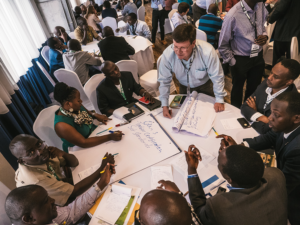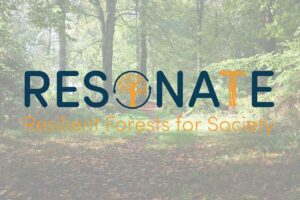
Chartered Forester Andrew Heald MICFor, Technical Director at Confor, visited Uganda. Andrew reports on his visit.
A ‘blended return’ sounds like something you might order in one of Edinburgh’s many hipster coffee shops, but it was something I heard repeatedly on a recent WWF NGP study tour in Uganda.
Uganda certainly has great coffee, but it also has one of the fastest growing populations in Africa and eye-watering rates of deforestation; between 1990 and 2005, Uganda lost over a quarter of its forest cover.
Is it time for a new approach to tackling development and deforestation? Perhaps we don’t need a new approach but rather better communication and cooperation between some of the organisations and communities trying to achieve common objectives.
I have been involved with WWF’s New Generation Plantation (NGP) Project for nearly 10 years. Initially, when I worked with UPM in Uruguay I was one of the participants, but in more recent years I’ve helped organise the study tours as part of a small team and also written some of the think pieces and reports.
NGP brings together groups of local and international stakeholders, and we explore some of the social, environmental and economic challenges of plantation establishment and management. I am very grateful to Confor for allowing me the time off to continue this work, which is slowly helping to change attitudes about plantations.
You can read more about NGP, the study tour and the insights report on the NGP website.
In many ways, the conversations and thinking around ‘blended returns’ are similar to those about ‘public money for public goods’. However I think they are also part of a wider landscape scale thinking, and the understanding of the need for a ‘social license to operate’.
In reality what we are discussing are the opportunities to optimise the value(s) delivered by a forestry project for the widest range of people, whilst ensuring an appropriate return for the investor.
The challenge(s) is/are whose values and which investors?

There can be many investors in forestry projects, with have a variety of aspirations, they include (but are not limited to)
- NGOs – looking to plant or restore native habitat
- Social impact investors – aiming to improve the livelihoods of communities.
- Private investors – expecting a return on their capital and/or time
- Local out-growers – switching their land from traditional crops
- National (or local) governments – hoping for a combination of the above
It is the last investor which is perhaps most critical, if the Government isn’t willing to support either financially or via regulation by creating a level playing field (illegal or unsustainable timber will always be cheaper) then any forestry project is likely to struggle.
NGOs can often be successful in the short term, but sometimes struggle to create a business model to fund and expand the forestry project in the medium and longer term. Oliver Rackam’s quote that … “the wood that pays is the wood that stays,” is applicable almost anywhere.
The challenge is how to create the funding structure which can balance the range of investors, and develop a safe(ish) and integrated land-use model, and which delivers verifiable and tangible returns.
This is no easy task, and there are no quick fixes. The American writer H.L. Mencken wrote,
“For every complex problem there is an answer that is clear, simple and wrong.”
I have some ideas about what this structure could look like and I am returning to Uganda later this year to explore whether it is feasible. The development of projects in the UK such as “Cloud Forest” and the Treenewable Climate Fund is hopefully indicative that this is an idea whose time has come.
Disclaimer: The views and opinions expressed in this article are those of the author and do not necessarily reflect the views of the Institute of Chartered Foresters.






